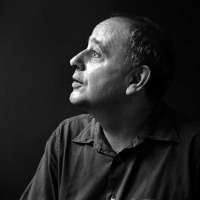Description of the project by Josep Lluís Mateo
Three interventions are proposed:
1. Marinadour. Dense housing complex on a commercial podium and parking.
2. The park generated when reorganizing circulation and segregating the upper rolled pedestrian flows with massive presence of vegetation between the paths of pedestrians.
3. Rivadour. Continuous urban block that follows the river and then breaks into town. Permeable ground floor.
The three interventions raise three independent and complementary topics:
In 1, Marinadour, the protagonist is volume. How to sculpt and empty it.
The Marinadour complex, organizes an appreciable urban density and a mixed program: parking and shopping center forming the base and housing over the great platform it creates. The volume is complex. Large garden patios produce gaps allowing the built mass to have lighting and ventilation inside.
The perimeter fits the space and contextual conditions:
The south and east facades, the most exposed to traffic noise, are protected with a double layer of glass that creates a greenhouse terrace with a high energy quality. Its sloping ledge introduces dynamism to the building mass, accompanying traffic tangential to the building.
To the west the volume its decomposed and its covering is metallic, reflective: we let in light and air courtyard.
Toward the (North), the River, horizontal terraces follows the geometry of the water.
In 2, in the park, it is the soil, the protagonist is land. Vegetation, transparency, public space, pedestrian connectivity.
Reorganization of circulation around the entrance Henri Grenet bridge, building a viaduct to allow pedestrian underpass and transform the area into an urban space and not just automotive. massive presence of vegetation as background of the scene.
In 3, Rivadour, is a line which we must build. The Rivadour complex, closes the urban space, it is a continuous block that follows the river and then breaks into town. In the end, it rises in height and hosts a hotel inside.
This continuous line forms the boundary between the park - access to the bridge and also talks on with the existing urban area, of a smaller scale. In permeable ground floor, urban pedestrian continuity through new urban space is guaranteed.





































